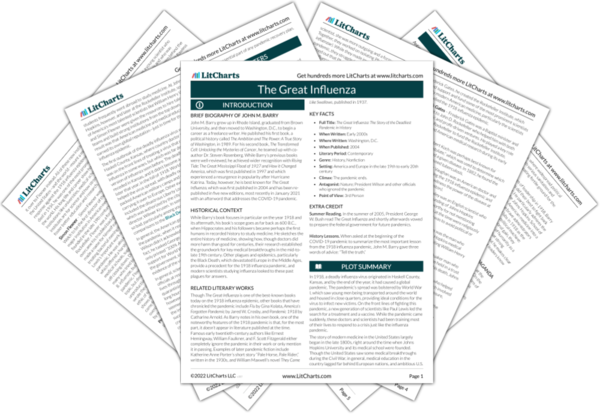Though in some ways the 1918 influenza pandemic is a story of the failure of government public health officials, Gorgas represents someone in the system who was trying to do good. Barry shows that, while Gorgas was limited in what he could do, he still managed to make some significant progress as a leader.
